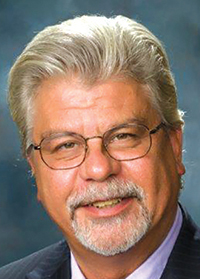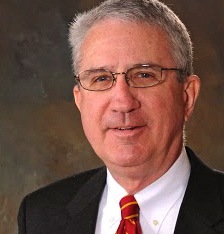State of the State: ‘Cooling’ national economy at ‘inflection point’
by August 18, 2024 12:59 pm 694 views

The national economy is reaching what one Arkansas economist called a “possible inflection point.” Arkansas’ unemployment rate, meanwhile, is a full percentage point below the national average with almost two job vacancies per unemployed person.
The Bureau of Labor Statistics reported Aug. 2 that the national unemployment rate rose from 4.1% in June to 4.3% in July, sparking a temporary stock market selloff. Arkansas’ unemployment rate is 3.3%.
Dr. Michael Pakko, chief economist and state economic forecaster with the Arkansas Economic Development Institute, said the Federal Reserve may have succeeded in its efforts to achieve a “soft landing.” The idea was to use higher interest rates to slow economic growth and tame inflation without pushing the economy into a recession.
Pakko said inflation is not as low as the Federal Reserve would like it to be, but it is creeping lower. He doesn’t see any pressures pushing inflation up. With the economy slowing, he expects the Fed to cut interest rates by a quarter point in its next meeting in September.
“I would characterize it as a possible inflection point,” Pakko said of the current environment. “Now, some economists would say we’re at a turning point, that the Fed has left interest rates too high and too long, and now it’s inevitable that we’re going to just spiral into a recession, and as evidence of that, look at what’s happened to the stock market.

“But I don’t see it that way. I think what’s happening in the stock market is completely separate from any real economic activity. And I think that right now, we’re probably at a point where growth has slowed to a sustainable pace, and in the absence of any shock to the economy, unexpected development, we’re likely to see steady but slow growth going forward.”
‘NOT SLOWING’
Mervin Jebaraj, director of the Center for Business and Economic Research at the University of Arkansas, said in an interview that he doesn’t believe inflation will reach the Fed’s 2% target, but it is closer than it has been. Jebaraj believes the Fed will cut interest rates .25% in September.
“I think the economy’s definitely cooling but not slowing, which is probably where the Federal Reserve wants it,” he said.
A Labor Department report on Aug. 14 showed that year-over-year inflation reached its lowest level in more than three years in July. The report showed that consumer prices rose 2.9%, down from 3% in June, the smallest increase since March 2021. Inflation hit 9.1% in June 2022. Grocery prices rose 0.1% and were only 1.1% higher than a year earlier. Shelter accounted for nearly 90% of the monthly increase.
“If you looked at the numbers that came out this morning, basically shelter is all of the remaining inflation. … It’s been mostly shelter (housing) for a while,” Jebaraj said.

The Labor Department report found that non-payroll employment nationally had increased by 114,000 jobs, which Pakko said is not a terrible month. Pakko said it is somewhat surprising that the unemployment rate hasn’t risen faster and more than it has. That phenomenon can be traced to there being so many job openings, he said. The number of vacancies is trending downward but is still above historical norms, which is absorbing some of the pressures that would otherwise lead to layoffs.
Pakko said Arkansas is experiencing a reverse of the national unemployment trends. The state’s rate has fallen from 3.7% in January to 3.3% in July, well below the national average and well below full employment. He said the state still has almost two job vacancies per unemployed person, which is more than the national average, but too many people lack the skills to fill unfilled vacancies.
NEED FOR MORE MIGRATION
As of June, the state’s labor force participation rate of 58.9% in July was almost four points lower than the U.S. rate of 62.7%. Pakko said there are many demographic and choice reasons behind Arkansas’ lower numbers, including the state having more retired people, having more working age males on disability, and perhaps having a greater emphasis on having one parent at home.
More migration would help, he said.
“As the baby boomers age and retire, we’re going to need a workforce to replace them, and it’s going to come from outside the state, I believe,” he said.
Jebaraj expects the state will have modest economic growth this year, though there will be some reduced sales tax collections. Bright spots in the Arkansas economy include construction, professional business services, and retail trade, which will probably slow as the economy switches to more services. That switch would reduce sales tax collections. Jebaraj said income and corporate tax collections are up, though not as high as a couple of years ago, when the economy was hotter.

Agriculture is among the sectors of the state’s economy facing headwinds. In a recent appearance on the Arkansas PBS show “Arkansas Week” that first aired Aug. 16, Dr. Ryan Loy, a University of Arkansas farm economist, said high supplies created by record row crop production are putting downward pressure on prices. At the same time, production costs are high, as are interest rates in a profession that requires a lot of capital.
Randy Zook, Arkansas State Chamber of Commerce president and chief executive officer, said on an “Arkansas Week” episode that first aired Aug. 9 that the state’s economy has many positive attributes. There’s a lot of highway construction. The largest single capital investment in Arkansas’ history, the second U.S. Steel mill in Mississippi County, is about to start operating, and the new Walmart corporate office is opening in phases.
Arkansas has the nation’s 14th highest population growth rate, though it’s unevenly distributed. The state, he said, has “Healthy population growth, healthy GDP growth rate, healthy employment, lots of jobs still available if you’ve got the right skills and are in the right places and are willing to go to work.”
Editor’s note: The State of the State series provides reports twice a year on Arkansas’ key economic sectors. The series publishes stories to begin a year and around mid-year to provide an update on the state’s economy. Link here for the State of the State page and previous stories.
